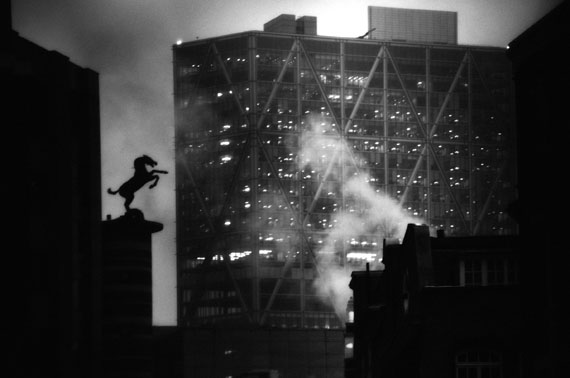
© Gast Bouschet et Nadine Hilbert
Fremd Gang
Patrick Galbats » Gast Bouschet & Nadine Hilbert » François Goffin » Carine Krecké » Armand Quetsch » Chantal Vey »
Exhibition: 28 Oct 2011 – 12 Feb 2012
CNA Centre National de l'Audiovisuel
1b, rue du Centenaire
3475 Dudelange
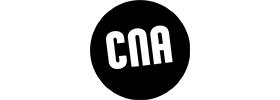
CNA Centre national de l'audiovisuel
1b, rue du Centenaire
3475 Dudelange
+352-522424-1
Wed-Sun 12-18
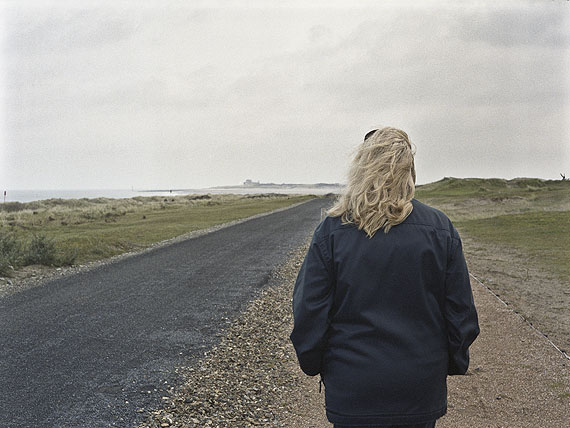
From the series aux abords… / op de grenzen, 2010
© Chantal Vey
It is a many faceted theme which has often intrigued, fascinated and inspired, especially writers and filmmakers: from the travel journal to the road movie, from J. W. v. Goethe to Jack Kerouac, from Wim Wenders to Johan van der Keuken. This is particularly the case for the medium of photography, whose documentary nature became a key ally of the exploration of new spaces: pioneering expeditions, photographic commissions, world news coverage. That said, authors such as Walker Evans and Robert Frank originated another aesthetic of travel, driven by a strong element of introspection, making a break with a desire for pure objective representation and the photojournalistic tradition.
In this sense Fremd Gang points up a two-way quest: as much in terms of physical movement as intellectual journeying. “Wayfaring” is somehow adopted as an “approach” to opening up an experimental and poetic space. It enables an exploration of the image via its dialogue with a context, its narrative potential, and what happens in between its fragmentary nature. The search for a subject or social commentary is guided by the question of how images can exponentially build a story. The quest for a singular iconic image is shifted towards that of an open-ended narrative and in this sense seems to break with the seeking of a decisive moment. The notion of “out of frame”, series works and the association of images, the range of formats, transversality of media, recuperation of protean documents, are but a few of the strategies used to build such a narrative. The acceptance of a kind of uncertainty principle is inherent to the rules of the game. It ties in with the experimental aspect of wandering, in the sense that it can lead into error. A straying off the beaten track, which enables the asking of a number of questions concerning the notions of place, space, movement, time, in an attempt to “reopen” the subject, while maintaining its underlying continuity.
Armand Quetsch suggests making a voyage from the centre of Europe (Brussels) towards one of its extremities, Lampedusa, a small Italian island to the far south of Sicily. His choice of itinerary is by no means innocent: Lampedusa, which has become the emblematic and preferred point of entry into Europe for illegal immigrants in makeshift boats, and Brussels which symbolizes a fortress Europe promising freedom of movement. Although while setting out on this odyssey the photographer declares his intention to bear witness to this engaging reality, he realizes, once under way, that his real interest lies somewhere beyond this direct documentary approach. Hence, Armand Quetsch reformulates his subject to find instead the truly revealing signs of the tension and malaise of his time within the photographic representation of the landscape of central Europe. Night views, a roadway, a door leading toward the unknown, a horizon line, at times giving way to emptiness, at others to over fullness, a detail devoid of spatial bearings, a washed out poster, a trace, the alternation of black & white and colour… fragments, as his title Dystopian circles / Fragments all along indicates, highlighting a destabilizing discontinuity.
One image depicts a photographer taking a shot, perched over the abyss, the darkness beneath. It is reminiscent of the painting by Caspar David Friedrich “The Wanderer above the Mists”. The man seen from behind is like the emblem of the Romantic experience of nature. Alone, on high, he stares towards some inaccessible point, and what he contemplates is at once something exterior and the projection of his own
interiority. Only here, the photographer does not stand above a distant landscape, but is facing a landscape without perspective, a black hole. Is it a contemplation of the daily tragedy of Lampedusa and its countless refugees who risk their lives for an uncertain future, or the allegory of Armand Quetsch’s personal experience and his disillusion with regard to the role of the committed photographer? A return to the point of departure, in the wake of a kind of double-edged utopia? Armand Quetsch presents us with freeze-frame images, which constantly seem to slip away, kinds of physical, visual and mental barricades offering us an incomplete vision of the world.
The work of François Goffin fits into the same gleaner of images spirit, where all is a matter of availability: the meeting with a subject, a visited place, a person in a here and now. Yollarda which means “on the road” was carried out in two stages, in different regions of Turkey. The chapter presented here was done in Kurdistan, which lies at the crossroads of two continents, an in-between region which brings together Western and Eastern culture, modernity and historical custom, secularism and religion. The images come to meet the viewer as visual poems. By way of their juxtaposition, the re-evaluation of their connections, the experience of a known situation is renewed. It is the experience of the viewer - his or her memories and anticipations - that is appealed to. The viewing imagination creates the link between two codified sundry images which mutually enrich each other to produce meaning. At times highly unusual, at others, permeated with humour and melancholy, the images capture the fragilities of the moment or even fractures that lie deeper. Through his photography, Francois Goffin presents us with a new vision of this complex region, one that goes beyond pessimistic outlooks and preconceived ideas. The border is also the underlying theme in the work of Chantal Vey. For Aux bords… she set herself the goal of travelling the 1386 kilometre frontier of Belgium, shared in turn with France, Luxembourg, Germany and the Netherlands. At the wheel of her car transformed into a mobile abode, for almost two months she rigorously follows the trace of this frontier zone. She approaches people, gathers their stories, adopts their favourite points of view, while remaining sensitive to the insignificant or trivial details she encounters.
In Chantal Vey’s work, the photographic narrative becomes a veritable performance. This ambulatory approach to artistic work is in keeping with the strolling “flanerie” of the Surrealists and Dadaists, the drifting of the Situationists, experimental “techniques” to attain to another way of seeing. Even though, for the past ten years, her work has been nourished by that which comes from elsewhere, the foreign, the unknown, what drives her is not a search for the exotic per se, but rather the gaze that one brings to bear upon the world. “To change sight” , as André Breton said with regard to one of the key challenges of Surrealism, which has always maintained a very special relation to photography. Between non-spaces and local particularities, Chantal Vey operates within the confines of a globalized world. She poses the question of a national identity and over and above this topical issue, by way of a poetic cartography, reveals her presence in the world.
The work of Patrick Galbats focuses on the precarious fate of Portuguese immigrants who have come to Luxemburg in search of a better life. So as to minimize their living expenses, they move into small bedsits that many café owners rent above their establishments. For the most part sublet, this accommodation is often cramped, very expensive and poorly maintained. These rooms are like places of transit, barely lived in, and personalized with a few sentimental knick-knacks and souvenirs. They are oddly provisional and empty, as if the lives of their inhabitants were in a state of suspense, while they wait to return to their homeland or have their families join them.
[insider], the most recent work by Gast Bouschet and Nadine Hilbert is part of their on-going critical questioning with regard to a world in mutation, its balances of power and interconnections. [insider] brings them to London, to its suburbs and financial districts. All is plunged into an unsettling atmosphere of chiaroscuro, worthy of the screenplay of an Expressionist film. The smooth corporate facades of the buildings appear to be fed upon by symbolically laden presences: fog, insects, volcanic residues, hair, dust. One’s sight is troubled, one’s reading of the images inhibited. The inaccessibility of the image is transposed to zones of confusion in the socio-economic context and its hyper-connectivity, and becomes symptomatic of a more widespread incomprehension. By the application of organic and mineral materials directly onto the lens of the camera, the process of creation adopted evokes that of a shamanic ritual: the added matter is placed upon the real as if to induce healing into a situation that is out of control.
The point of departure for Carine and Elisabeth Krecké’s project is an image found by chance on Google Street View. It shows a man armed with an assault rifle crossing the street with a determined step while looking straight into the lens of the Google vehicle’s camera. The hypotheses stemming from this “found” document then proceeded to nourish the photographic chronicle that brought them to Rapid City. Beneath this small Dakota town’s veneer of tranquility, there soon unfolds an historical context of extreme violence: not far away is the site of the Wounded Knee massacre, as well as the Amerindian reservation of Pine Ridge, synonymous with segregation, unemployment and disgraceful living conditions. It is this zone on the fringes of the American dream, one even partially excluded by the cameras of Google, that is to become the object of their investigation in the field. The discourse is established via the interweaving of polymorphous documents of various origins: archival excerpts, interviews, drawings, photos, videos and sound recordings. Over and above its chosen intention, Dakotagate follows up a critical questioning on the photographic medium itself. On the one hand the artists exploit a certain kind of document, the images gathered by Google Street view, that one could qualify as a new genre of street photography. On the other hand, they question the process of the fabrication of a narrative by way of the image. So while a pure literal image probably cannot exist, what are the recognizable limits of the “constructed” within a photojournalistic document or an image of war?
Whether injecting an element of fiction into a depiction of reality or building a story from the starting point of the real, Fremd Gang highlights these constant shifts and asks to what degree the real can be feasibly replayed. Its worth for the process of creation, the following of a conceptual grid, makes photography a relevant contemporary tool, which offers a fruitful terrain for new discourse and different understandings.
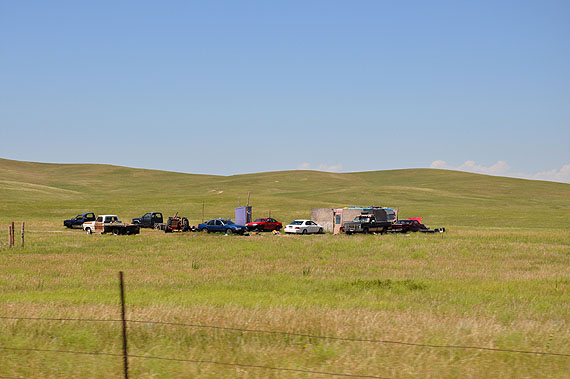
From the series DAKOTAGATE, 2010-2011
© Carine et Elisabeth Krecké
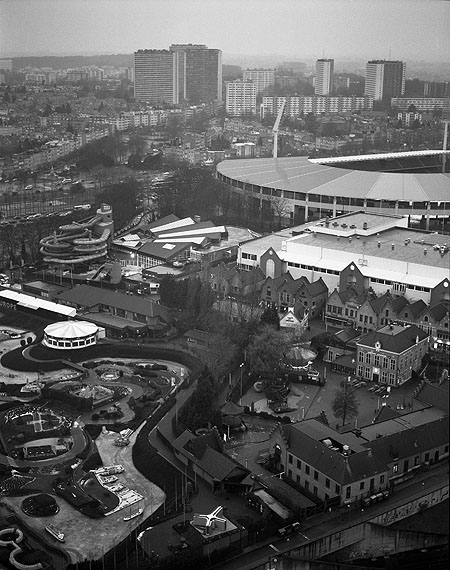
© Armand Quetsch